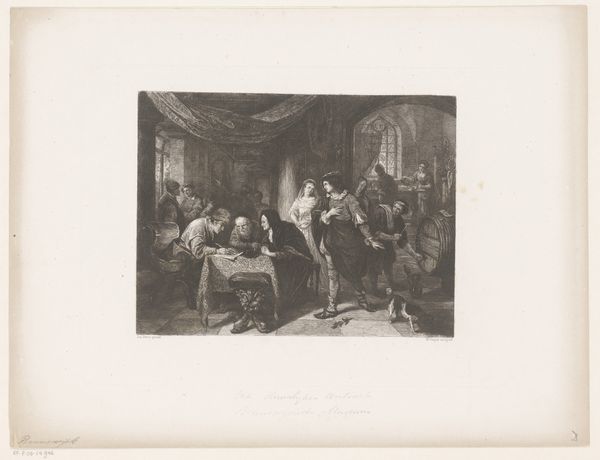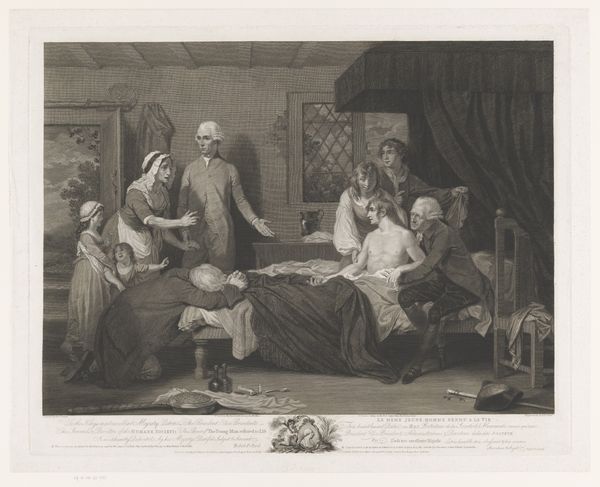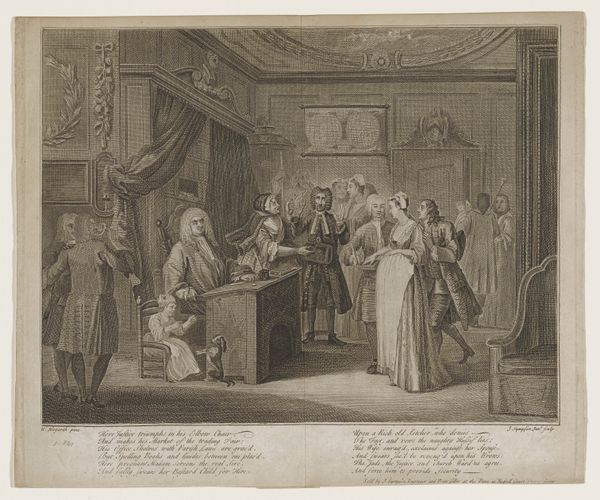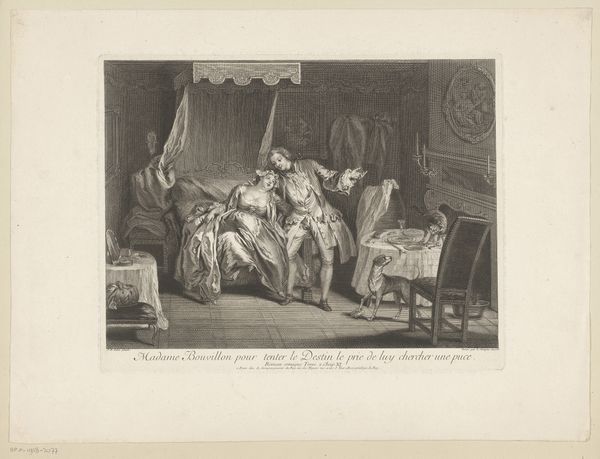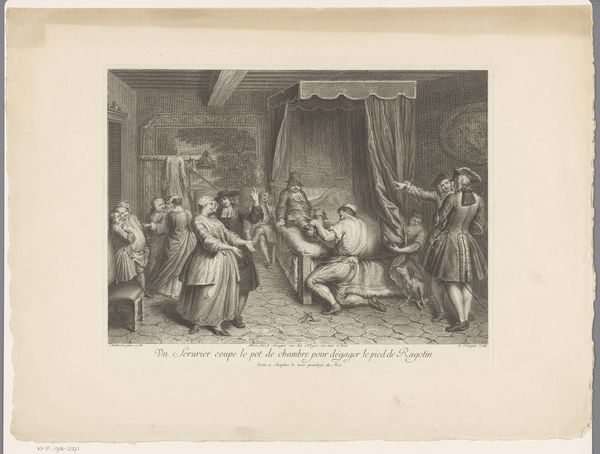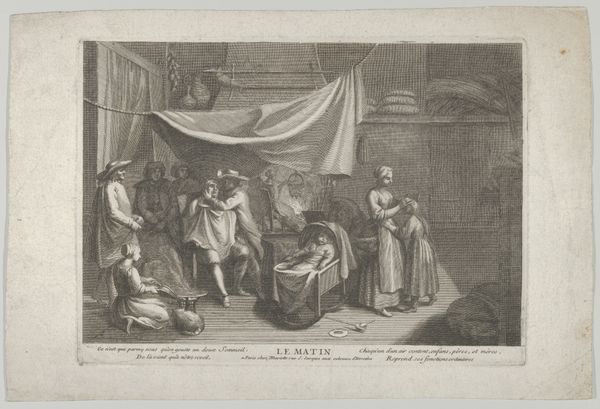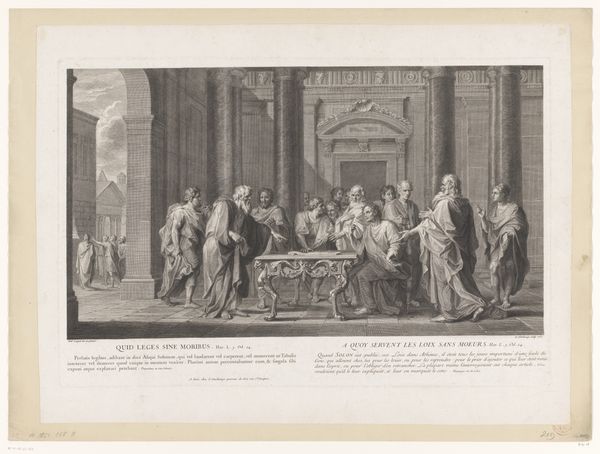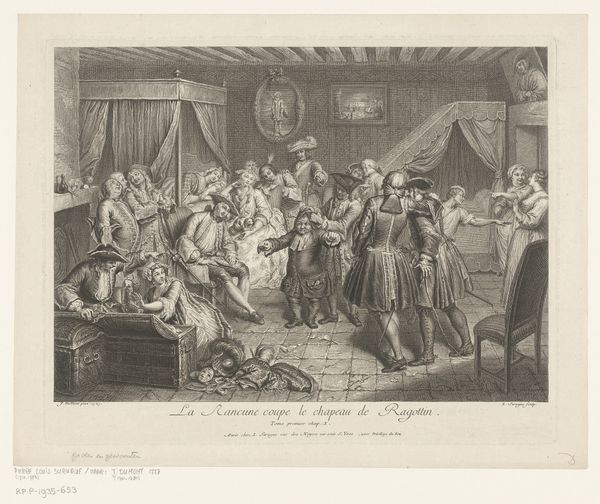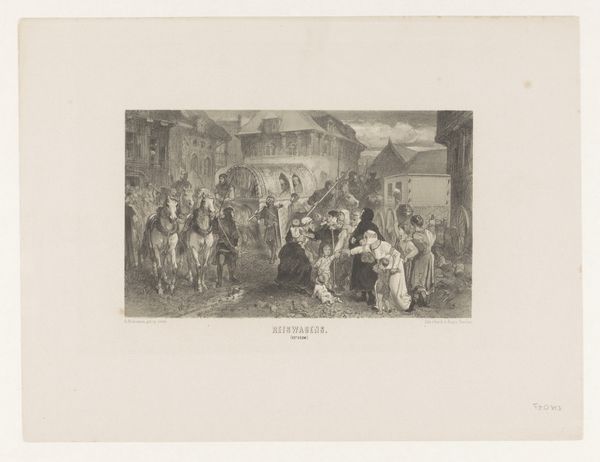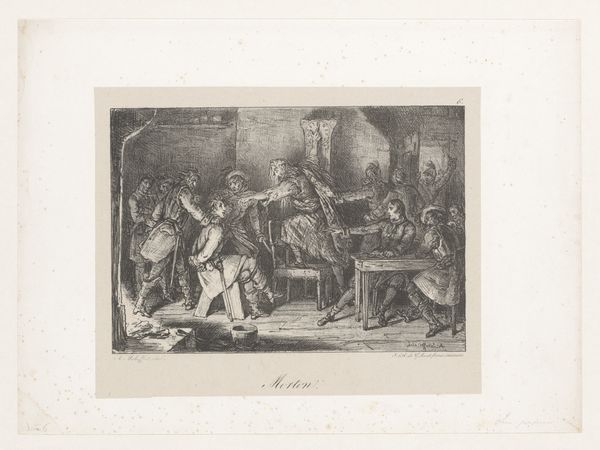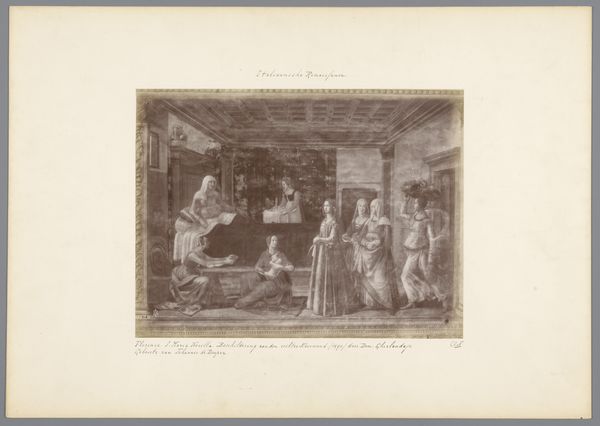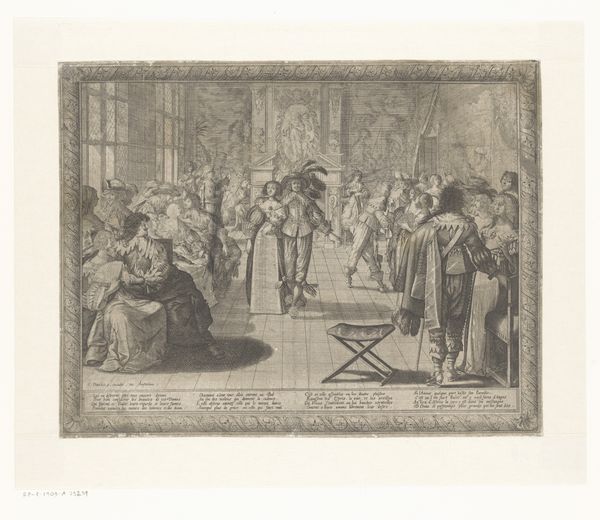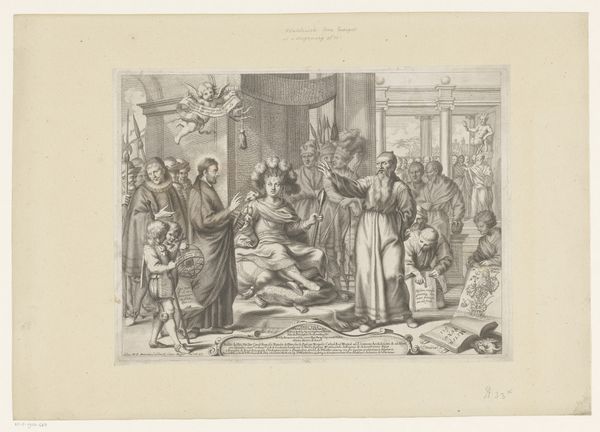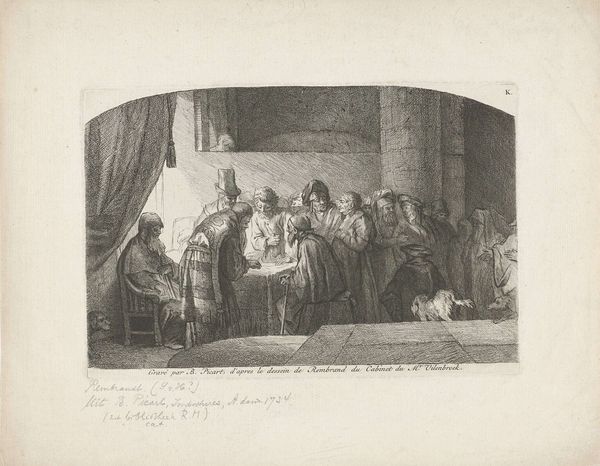
print, engraving
#
portrait
#
neoclacissism
# print
#
group-portraits
#
history-painting
#
academic-art
#
engraving
Dimensions: height 674 mm, width 994 mm
Copyright: Rijks Museum: Open Domain
Curator: Good morning. Here we have "Eerbewijzen aan het lijk van Raphael," or "Homage to the Corpse of Raphael," an engraving by Alexandre Vincent Sixdeniers, created sometime after 1806. What's your immediate impression? Editor: Well, the first thing that strikes me is the light. It's somber, theatrical even. Everyone's gathered around the body, this kind of... macabre stage. It gives the sense of the tragic end of a celebrity! Curator: Yes, the composition certainly emphasizes that dramatic tension. Sixdeniers, working in the Neoclassical style, has structured the scene meticulously. Note the arrangement of figures, all leading the eye toward the central figure of Raphael, who is framed in his death bed. The engraving technique renders a wide array of tonal values, constructing form and spatial depth. Editor: Exactly. It's academic art alright, yet I still think the staging and overall darkness hints to something deeply moving. There's also so many faces! Who are these people? Curator: That's part of the historical context. It depicts a group portrait of notable figures paying their respects to Raphael. They're there as witnesses. The engraving monumentalizes a particular historical moment, the death of a Renaissance master, turning it into an event of almost civic importance. Editor: Civic importance. Right. I mean, who would engrave that after all? Is that not what everyone wants anyway? To be important when you're gone? Makes you wonder what they are really honoring. The man, or what he left behind? Curator: A fitting point, considering that Neoclassicism often utilizes historical subjects to convey moral and civic lessons. It's not simply about representing an event; it’s about using the past to teach. But indeed it makes me question the intent. Is Sixdeniers reminding viewers of artistic greatness and the solemnity of death? Editor: It feels like both to me. Maybe that's why I feel uneasy. All this pomp for death. Maybe it should inspire a bit of contemplation within each one of us! Curator: Indeed, perhaps its value lies in that ambivalence—its capacity to provoke multiple perspectives across the passage of time. Thank you. Editor: Likewise. Always something more to see, isn’t there?
Comments
No comments
Be the first to comment and join the conversation on the ultimate creative platform.
